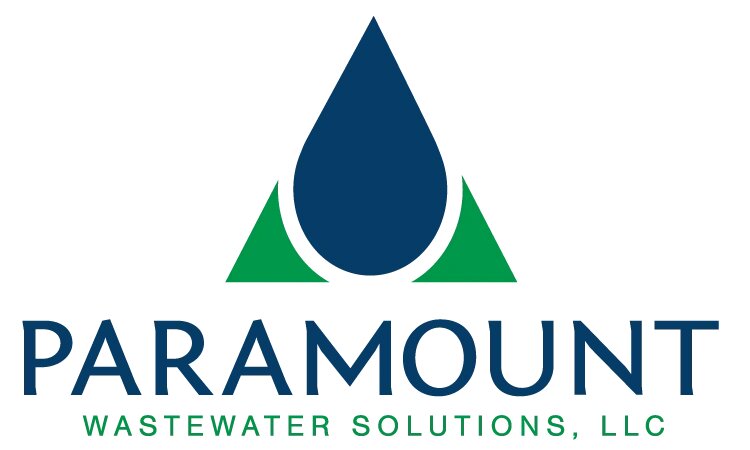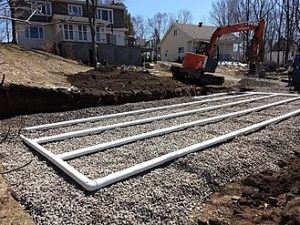If you have heard anything at all about septic systems, then chances are you have heard some mention of a drainfield or a leach field. So if you’ve heard the term, chances are you probably have questions as to what they actually are.
The term drainfield can be incredibly confusing because it can lead the unsuspecting septic user to think that untreated wastewater is getting drained straight into a specific area. This is absolutely NOT the case, and the more you understand about how drainfields work, the better informed you will be when discussing drainfield options.
The easiest explanation for what a drainfield is; it is a unique filtration system designed to work WITH a septic tank. The wastewater flows from the house to the septic tank. The septic tank provides filtration and detention for biological treatment. The filtration occurs when the wastewater separates forming scum that floats and sludge that sinks to the bottom of the tank. The area between the scum and sludge is called the clear zone. The water from the clear zone passes from the first chamber in the septic tank to the second chamber. Further separation occurs and then the clear zone from the second chamber flows to the drainfield. When the wastewater enters the drainfield, the water enters the soil where aerobic treatment and final polishing occurs. Typically 2 feet of suitable soil can adequately treat the wastewater.
Sounds simple, right? Well, that’s because it is actually pretty straightforward. Have more questions? Check out the useful diagram below.
Basic Drainfield Facts
- Drainfields come in all shapes, locations & sizes. There is no “one-size fits all” when it comes to establishing a proper drainfield for a site. The design of the drainfield depends on your property, the septic tank you have, and a number of other factors that can dictate how a system works.
- Drainfields are one of the BEST ways to treat water. This is something that people who do not understand septic systems fail to realize. A drainfield is designed to assist with the distribution of wastewater in a SANITARY and FILTRATED way. In fact, a properly maintained drainfield can be a major asset to the property, as well as be great for the environment.
- Drainfields do not have to smell. Typically, if you encounter a drainfield that doesn’t have the most pleasant aroma coming from it, this means that something isn’t working properly with the septic system. A well-designed properly functioning drainfield should not smell and should not be a hindrance to the property.
- Straight, un-treated wastewater is NOT going straight into the drainfield. The septic tank is where separation of liquids and solids occur, and depending on the type of tank an owner has, different sanitizing methods are used to initially treat the water. From THERE, a drainfield may come into play as a further, nature-based filtration system.
- Soil in the drainfield contains aeorobic bacteria and has the capability to absorb pathogens (bad bugs).
Basic Septic Facts
Septic tanks maintain a constant liquid level.
- Septic tanks must be pumped when sludge levels and scum levels are greater than 30% of total liquid level in the tank.
- Anaerobic bacteria are located within the septic tank and slowly digest the wastewater.

